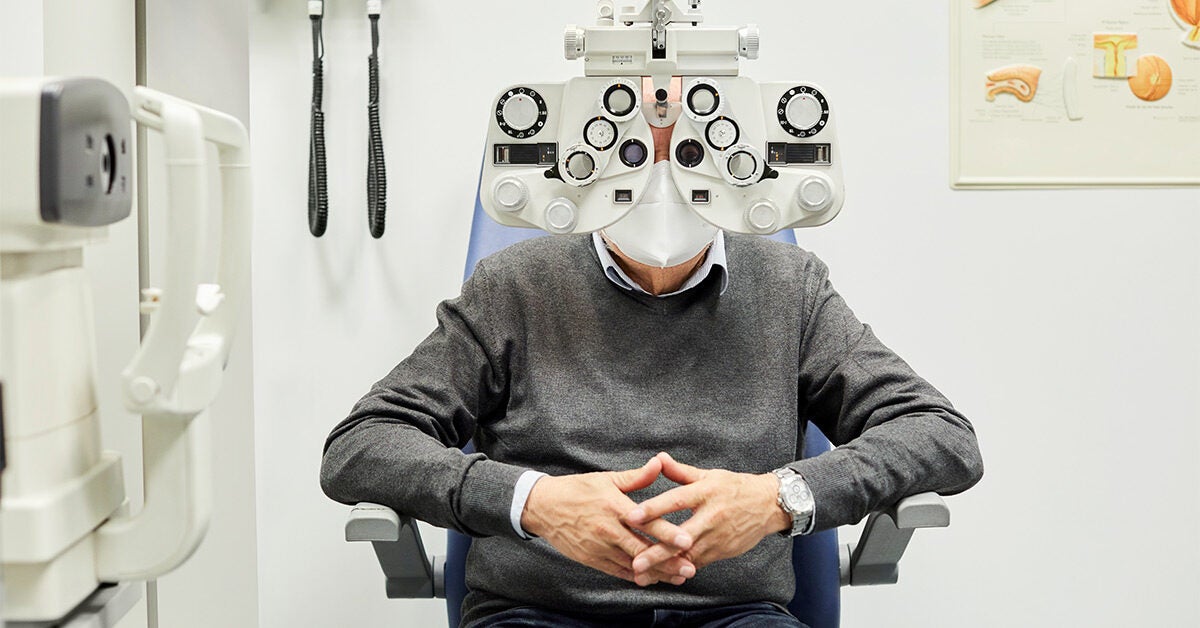

- A new study shows that people with severe COVID-19 may be at risk for certain eye disorders.
- COVID-19 has been linked to cases of conjunctivitis, but this is the first time that researchers have noticed nodules on the back of patients’ eyes.
- Experts say the viral infection can affect blood vessels, leading to nodules.
New research shows that patients with severe COVID-19 may be at risk for certain eye abnormalities, according to a study published today in the medical journal Radiology.
The study, initiated by the French Neuroradiology Association, used MRI scans to find significant abnormalities in the eyes of some people with severe COVID-19.
129 patients were examined, all of whom underwent brain MRI. Of the 129 patients, 9 (7 percent) had abnormal eyeball MRI findings. Eight of these patients had spent time in the ICU before COVID-19. The scans revealed one or more nodules on the back of the eye.
COVID-19 has been linked to cases of conjunctivitis, but this is the first time that researchers have noticed major abnormalities. In this case, the nodules on the back of the patient’s eyes.
The researcher’s theory is that the nodules may be related to inflammation caused by the virus and insufficient drainage of the veins around the eyes due to patients remaining in the prone position for a significant amount of time.
Seven of the nine patients with nodules had spent time prone in the ICU or were intubated.
Many of the nine patients also had underlying conditions. Two had diabetes, six were obese, and two had hypertension.
These circumstances and the stay in the ICU can all negatively affect eye health.
For those hospitalized for COVID-19, simply lying in bed can be a risk. Staying in the supine position for a long time can affect the drainage of these blood vessels.
Dr. Claudia FE Kirsch, chief of neuroradiology at Northwell Health in New York, said the infection can also cause a reaction that can damage the eye.
“When a virus enters the bloodstream, the blood vessels become blocked, causing an inflammatory response that can affect the ocular flow,” explains Kirsch.
As with other newly discovered potential side effects of COVID-19, the long-term risks are still being assessed. Because such a small sample group has been studied, more tests are needed to determine long-term risks.
There may be many other patients with severe COVID-19 who have these nodules. Because the focus was on controlling their vital signs in the ICU, these patients were not subjected to these other accurate tests.
“When these patients come in, they are very sick. The goal is to keep them alive. In the ICU, we are focused on just keeping them able to breathe, ”said Kirsch, explaining why these nodules may not have been caught before.
She also noted that nodules can form in other parts of the body, but doctors are not known to screen for them.
One reason to be mindful of eye nodules is that they can potentially lead to blindness if left untreated.
“The first goal is to allow patients to breathe on their own and reduce viral load,” Kirsch said. “Prevention would be the ideal, so that patients do not contract the disease at all. Washing hands and all the basics are important too, but we’re still learning what happens with the eye. “
The study suggests that eye screening should be considered in all patients with severe COVID-19. Screenings can include an MRI and a fundoscopy, which uses a magnifying lens and light to check the back of the eye.
Doctors are still discovering and learning about this possible side effect. The virus primarily attacks the lungs, but has previously been linked to eye disorders such as conjunctivitis.
Still, eye defects remain largely unstudied with regard to COVID-19.
“We haven’t seen many COVID-19 complications from an ocular point of view,” says Dr. Mark Fromer, ophthalmologist at Lenox Hill Hospital in New York.
“We have seen some conjunctivitis related to COVID-19, but it generally resolved on its own without intervention. It’s quite easy to check the back of the eye without an MRI, ”he said. “What the study suggests makes sense, namely an ocular exam in which the pupil is dilated and the macula can be checked with a magnifying glass.”